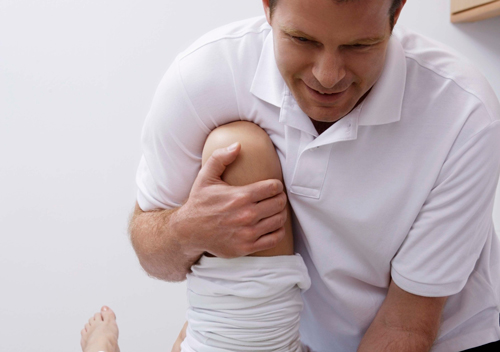
Dislocation of the kneecap, or patella, is especially common among young women 16 to 20 years of age who participate in sports such as soccer, gymnastics and ice hockey. When it occurs, the kneecap slides out of its groove, usually laterally, resulting in pain, swelling and decreased mobility. Patellar dislocation can result from a direct blow to the knee or an awkward twisting motion. Up to 24% of those who incur patellar dislocation are born with abnormal alignment of the kneecap. When this occurs, patients can incur an actual dislocation or feel that their kneecap is slipping. Kneecap dislocation often responds to physical therapy alone, especially for young people whose bones have not yet matured.
Strengthening exercises help regain the range of motion and comfort you experienced prior to injury. Stretching exercises improve knee extension, restore mobility and reduce healing time. Typically, these exercises should be performed for 30 minutes four days a week. In addition, cardiovascular exercises are encouraged, as long as you avoid those such as running on uneven surfaces that put significant stress on the knee and kneecap. However, surgery is sometimes needed to bring the kneecap back to its normal alignment, repair soft tissues and remove bone fragments. Begun immediately after surgery, a physical therapy program reduces pain, maintains the health of the muscles and tissues around the kneecap, and prevents dislocation from recurring. Whichever treatment is necessary, physical therapy can
- stabilize the muscles of the knee by focusing on the quadriceps and hamstrings
- improve flexibility through stretching the muscles and tendons around the kneecap
- strengthen hip and core muscles to improve knee stability and avoid reinjury
- improve coordination and balance to help the muscles and knee joint work efficiently
Even if you seem to have achieved full rehabilitation, continue physical therapy to maintain the results. We can successfully adjust your program to help you keep up your strength and prevent further injury.









